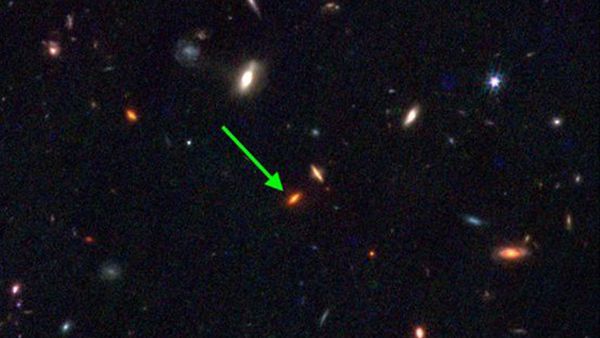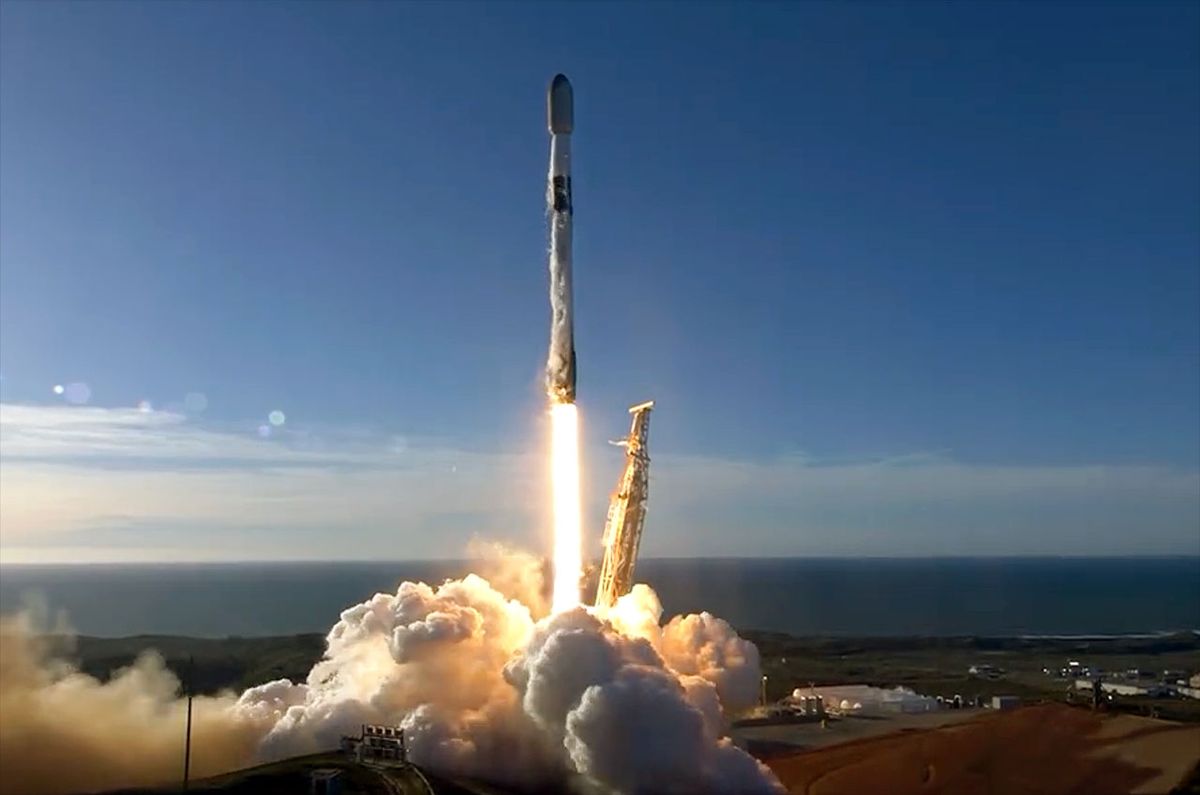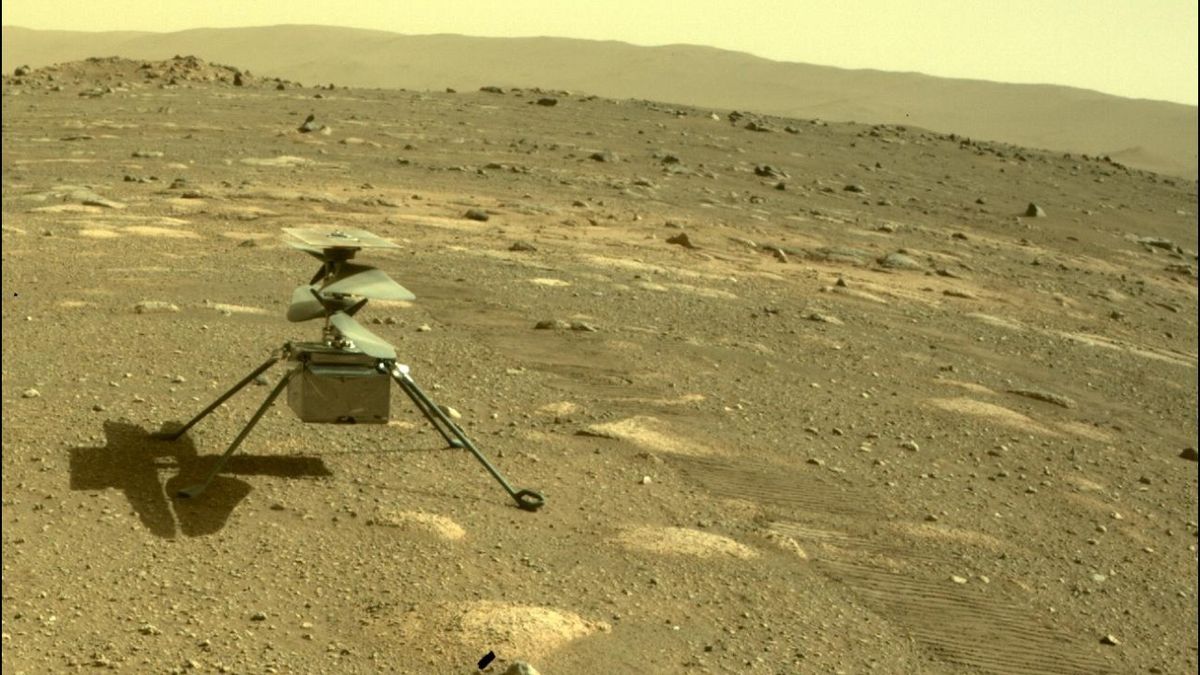Fresh aurora pictures from a NASA astronaut is making us green with envy. Earlier this month, International Space Station astronaut Jasmin Moghbeli captured absolutely stunning pictures of a flag-like green aurora stretching from the southern regions of the Earth far up into space. “The auroras from up here are spectacular,” NASA‘s Moghbeli told Space.com during a Wednesday (Feb. 21) ISS press conference about science. Of the green auroras Moghbeli saw on Feb. 15, she said it was one of her space mission highlights witnessing “some green, some red that just…
Read MoreCategory: Solar System
Our solar system
James Webb telescope finds ancient galaxy larger than our Milky Way, and it’s threatening to upend cosmology
The James Webb Space Telescope (JWST) has found a galaxy in the early universe that’s so massive, it shouldn’t exist, posing a “significant challenge” to the standard model of cosmology, according to the study authors. The galaxy, called ZF-UDS-7329, contains more stars than the Milky Way, despite having formed only 800 million years into the universe’s 13.8 billion-year life span. This means they were somehow born without dark matter seeding their formation, contrary to what the standard model of galaxy formation suggests. How this could have happened is unclear, but…
Read More‘A wonderful spectacle’: Photographer snaps rare solar eruption as ‘magnetic noose’ strangles the sun’s south pole
A gigantic plume of plasma recently exploded from the sun’s south pole, where solar eruptions almost never occur. The explosion, which a photographer captured in stunning detail, is another telltale sign that the sun is about to enter its most active phase — the solar maximum. The rare phenomenon occurred on Feb. 17, when a solar flare exploded from a sunspot near the sun’s south pole, releasing a gigantic column of ionized gas, or plasma, that towered around 124,300 miles (200,000 kilometers) above the solar surface — around 15 times…
Read MoreSpaceX to launch 24 Starlink satellites from Florida today
SpaceX plans to launch 24 of its Starlink internet satellites from Florida today (Feb. 24), on the company’s 18th mission of 2024 already. A Falcon 9 rocket carrying 24 Starlink spacecraft is scheduled to lift off from Cape Canaveral Space Force Station in Florida today during a four-hour window that opens at 4:59 p.m. EST (2159 GMT). You can watch the action live via SpaceX’s X account. Coverage will begin about five minutes before the window opens. Related: Starlink satellite train: How to see and track it in the night…
Read MoreDo you want to spend a year inside a mock Mars base for science? If so, NASA wants you.
Applications are open for NASA’s next year-long mock Mars mission, which simulates the challenges crews may face during future expeditions on the Red Planet. The ground-based mission, called CHAPEA (Crew Health and Performance Exploration Analog), consists of four volunteer crewmembers living and working inside an isolated 1,700-square-foot (158 square meters), 3D-printed habitat. Located at NASA’s Johnson Space Center in Houston, the Mars Dune Alpha habitat includes an adjoining 1,200-square-foot (111 square meters) enclosure used for simulated spacewalks. “As NASA works to establish a long-term presence for scientific discovery and exploration…
Read MoreIndia plans to include a helicopter on its next Mars mission
India’s next Mars mission could include a helicopter that follows in the footsteps of NASA’s pioneering Ingenuity drone. The Indian Space Research Organisation (ISRO) is currently working on the concept, which would fly along with an Indian Mars lander sometime around the start of the 2030s. India’s first mission to the Red Planet — the Mars Orbiter Mission (MOM), also nicknamed “Mangalyaan” — launched in November 2013 and entered orbit around Mars in September 2014. The spacecraft conducted science in orbit around the Red Planet for eight years before contact…
Read MoreBlue Origin’s New Glenn rocket rises on launch pad ahead of debut liftoff (photo)
Blue Origin’s powerful new rocket has gone vertical on the launch pad for testing, ahead of a possible debut flight later this year. The New Glenn rocket from Blue Origin rolled out on to Launch Complex 36 (LC-36) at Cape Canaveral Space Force Station in Florida on Wednesday (Feb. 21), the company founded by Amazon’s Jeff Bezos announced. The heavy-lift rocket will be put through its paces in the coming weeks and months with “several demonstrations of cryogenic fluid loading, pressure control and the vehicle’s venting systems,” Blue Origin officials…
Read More3 tiny new moons found around Uranus and Neptune — and one is exceptionally tiny
Astronomers have discovered two tiny moons orbiting Neptune and one circling Uranus, bringing the number of their known moons to 16 and 28 respectively. Uranus’ new moon, the first detected around the ice giant in over two decades and possibly the smallest of its ilk, is just 5 miles (8 kilometers) wide; it takes 680 days to complete one orbit around Uranus. In comparison, one Mars’ moons named Deimos, considered to be among the tiniest known moons in our solar system, is 8 miles (13 km) wide. The new moon…
Read MoreIntuitive Machines’ Odysseus moon lander didn’t deploy camera during historic descent
Sorry, space fans: We won’t be getting ground-level views of the first moon landing by an American spacecraft since the Apollo era. That epic touchdown came courtesy of Intuitive Machines’ Odysseus lander, which lowered itself onto the gray dirt about 190 miles (300 kilometers) from the moon‘s south pole yesterday (Feb. 22). The success was hard-won. As they prepared for descent yesterday, mission team members discovered that Odysseus’ laser rangefinders, which the lander used to determine its altitude and horizontal velocity, weren’t working properly. So they switched over to an…
Read MoreNASA Eclipse Soundscapes Project will record how 2024’s total solar eclipse impacts nature
While humans will enjoy the majesty of the total solar eclipse as it sweeps across several states in the U.S. on April 8, 2024, the celestial event will also be experienced by flora and fauna. That’s why the NASA-funded Eclipse Soundscapes Project will observe and collate the sights and sounds of the total solar eclipse to allow humanity to better understand how such events can impact wildlife. The agency is also urging the public to join in on this effort. “Eclipses are often thought of as a visual event —…
Read More



